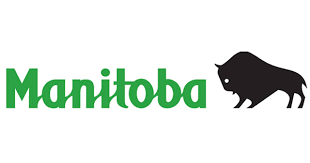As we started covering in episode #1 of this series,
animals have developed different strategies to survive the winter months.
Some of our trail animals use Hibernation as a way of surviving the inclement months. For others Topor is a better solution.
Hibernation is not just sleeping. It is a very complex concept and is still under study. Hibernation can range from short periods of inactivity ranging in length from hours to months. True hibernation, as exhibited by our thirteen lined ground squirrel, is a lengthy period of time where all body functions slow to a bare minimum and the animal is in a very deep sleep and are extremely hard to rouse. The body temperature can drop to just a degree or two above freezing. This type of hibernating animal is using stored body fat as its energy source. Like many animals that exhibit some type of hibernation the ground squirrel will overeat in the fall of the year and build up a supply of a special type of fat, called brown fat, which has a very high energy content. The Eastern Chipmunk that is seen along the trail demonstrates a different form of hibernation. It will eat heartily in the fall but also store food away in underground borrows. It will sleep for periods of time and then rouse to have a snack and then return to sleep. Another of our familiar animals demonstrates yet another type of hibernation.
The Red Squirrel can be seen running around on pleasant winter days but disappears on not so fine days. When the weather is not to its liking the squirrel will become inactive in a type of hibernation called topor. Topor is a time of reduced body functions and energy conservation but not to the same degree as the ground squirrel or chipmunk. During the fall it hides food supplies all over a designated area. When the weather is fine it will come out of its hiding place and go in search of its hidden treasures. The squirrel seems to have an excellent memory for where it hid food.
The Cottontail rabbit does not migrate, hibernate or store food for future use. Its main winter adjustment is to change its food supply. In the summer it eats a wide variety of green plants, including items from our vegetable and flower gardens. In the fall it changes from green plants to tree and shrub bark, buds, twigs and conifer needles. Once again some of these items maybe from our trees and shrubs. The rabbits have one interesting feature that helps it get the most out of what it eats. There is a special modification of the digestive system. The food taken in passes through the digestive system and the leftovers are eliminated as droppings. That sounds pretty normal, but the rabbit can produce special droppings, courtesy of a special part of the digestive system, that are different from the ones we see. These particular droppings are a different shape and colour. As soon as the rabbit expels these distinctive droppings it ingests them. There is still energy in these droppings which is extracted the second time through the digestive system. In this way the energy demands are met without having to find more food. To us the idea sounds revolting but to the rabbit it is a matter of survival.
And this is how some of the animals we see along the Harte trail survive the winter. There are a wide variety of other ways animals in our province make changes in their life style to accommodate the winter months.
Stay tuned to learn more!









